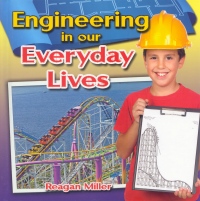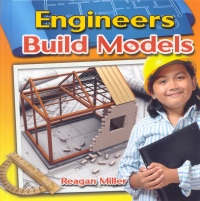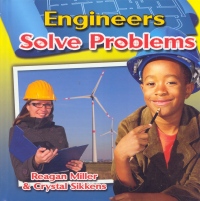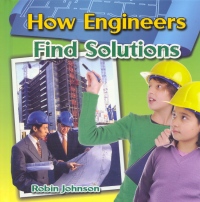| ________________
CM . . .
. Volume XXI Number 12. . . .November 21, 2014
excerpt:
Crabtree Publishing is certainly known for producing reference works for children. The “Engineering Close Up” series is a proud addition to this book list. Although engineers are involved in creating almost every aspect of our lives, it is a profession that is almost unknown even among adults. Each book in the series can be read individually to discover the single topic of that book, with many of the terms defined either in the text or in the glossary at the back. If the series is taken as a whole, there is some repetition that reinforces the main ideas. There are also references for each book, some online and others in print. It may not be possible for the students to access some of the PBS materials from computers in Canada. This series succeeds in two ways. First, there are appropriate descriptions of what engineers do and how it affects the world, along with suitable examples that will make sense to the student. In addition, there are many pictures to reinforce the message in the text. Second, there are good connections to how those same skills can be used by children in solving problems in their own life. There are even group activities, such as brainstorming, that are likely to be useful in school activities and life. Engineering in Our Everyday Lives, the first book in the series, contains a broad introduction to engineering. The examples are interesting and tantalizing, and there is something here to interest any child who finds the book. Without saying it directly, this book will encourage children to think about the things around them in a new way - as things that have been created by someone for some reason. Engineering in Our Everyday Lives is an interesting introduction to design in a child’s world. Building models is something that all of us can understand. Engineers Build Models discusses several different types of models in both 2 and 3 dimensions. More importantly, the book goes through the process of planning a project, something the reader can use every day. The examples given are wide-ranging and appropriate, including objects that the child will understand, such as a backpack, bridges, cars and windmills. This is arguably the most engaging book in the series as modelling is an activity that children will practice in some of their classes and even at home. Of all of the books in the series, Engineers Solve Problems is the most useful in terms of applying the book’s information to other areas. Problem-solving is something that engineers do and that is also necessary in everyday life. Children can always benefit from a message encouraging them to break down a problem into pieces and to try to find a solution, and then to find a better solution. This volume also includes step by step exercises that an educator can use in class. Many of the aspects of Engineers Solve Problems are also present in How Engineers Find Solutions. In fact, there is much overlap between the two books. Here, the series also takes the reader back to a more general approach to engineering, creating a useful arc if the books in the series are taken as a whole. Although the repetition of information in the books is useful in terms of students’ learning, it can be less acceptable in a personal collection. If a classroom library will be used to study design or engineering in the class, it would be great to have all four of the books in the series. However, if the books are being purchased for a home library, it might be better to purchase only the books of greatest interest. The abundant photographs are welcome and fitting for the age group. It would, however, be preferable to have more Canadian content. For example, one of the pictures of a classroom has a U.S. flag in the background. Couldn’t there have been a Canadian flag? Or no flag at all? Engineering is a wide ranging profession. Even so, this series expands the ideas beyond that which would actually be considered engineering into some areas that would be better considered to be part of the job of an architect, designer or foreman. This is not a major complaint, however, since the benefits of introducing this kind of thinking into a child’s life far outweigh this blurring of the line between professions. Any books that can encourage broad thinking in children are very welcome in the book world. Since science is still an area that is less known and understood than is ideal, this series is an appreciated addition.Highly Recommended. Willow Moonbeam is a Math professor, librarian and former engineer.
To comment
on this title or this review, send mail to cm@umanitoba.ca.
Copyright © the Manitoba Library Association. Reproduction for personal
use is permitted only if this copyright notice is maintained. Any
other reproduction is prohibited without permission.
Next Review |
Table of Contents for This Issue
- November 21, 2014. |



